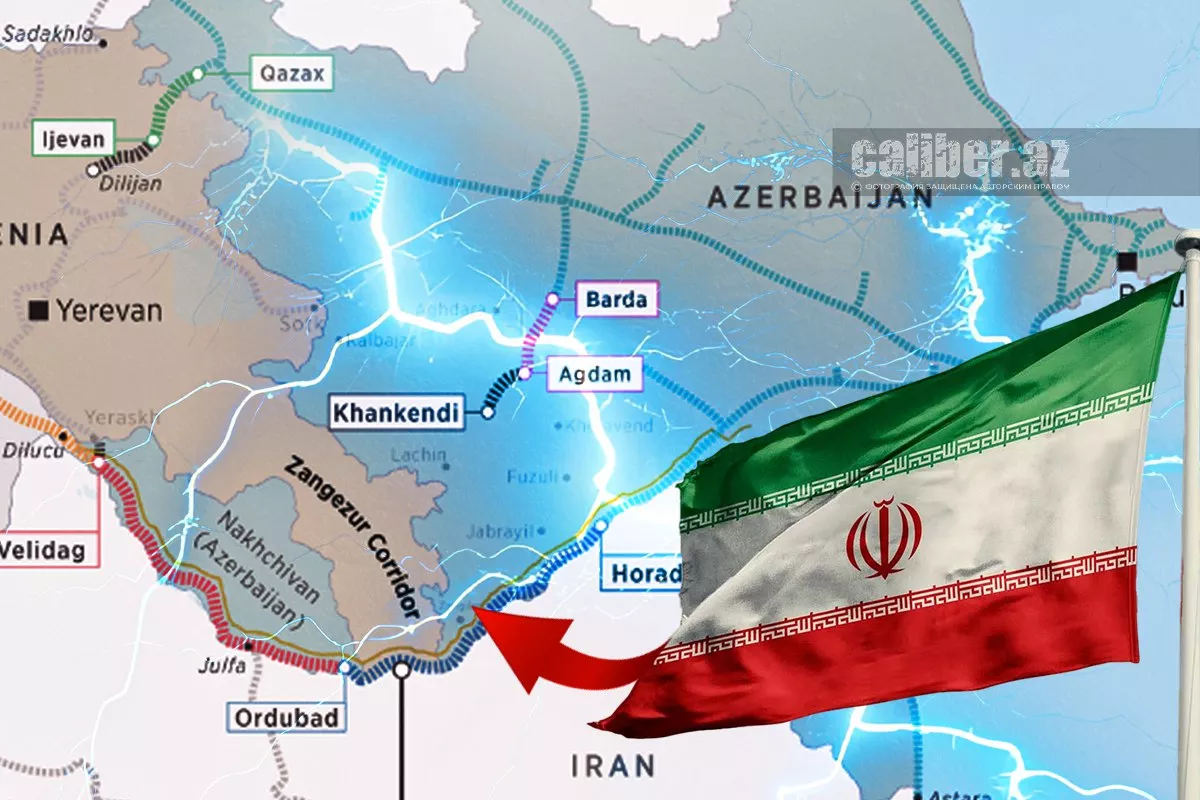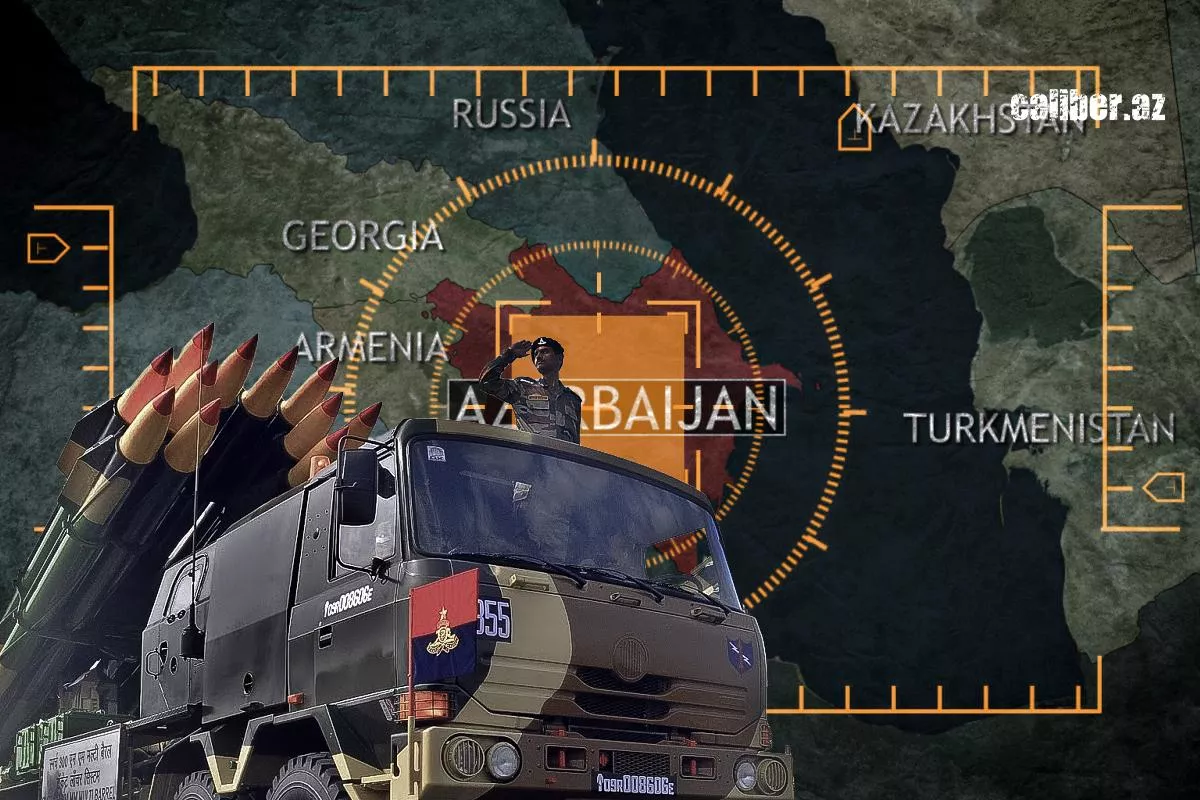A locomotive stalled on the tracks The collapse of India’s South Caucasus policy
Azerbaijan possesses a unique geographical location at the crossroads of continents, which, among other advantages, enables it to serve as a transit country for global transport routes.
One of the major trade corridors passing through the country—alongside the East–West route—is the North–South corridor, designed to connect Russia through Iran to the shores of the Indian Ocean. Azerbaijan has consistently supported the practical implementation of this idea.
However, the full realisation of this project has often been hindered by political considerations, sometimes quite artificial. For instance, two years ago Moscow and Tehran signed an agreement to construct the Rasht–Astara railway along the southern coast of the Caspian Sea. The length of this section is 160 kilometres, representing the final segment of the corridor’s western branch, and it is precisely this construction that the Iranian side had long delayed.
In addition to technical considerations, the real reason for the delay in this project, it seems, lay in Tehran’s reluctance to participate jointly with Baku in large-scale, mutually beneficial initiatives amid deep political divergences on certain regional issues. It is enough to recall that while Azerbaijan firmly insisted on its demand for Armenia to open the Zangezur Corridor, Tehran, as is well known, declared that a corridor through Armenia represented a “red line” for Iran, allegedly altering the borders in the region. One may also assume that the crisis in relations between Baku and Moscow, which persisted for much of this year, likewise did not contribute to the advancement of the issue.

However, following the painful Israeli–American attack over the summer, Tehran clearly realised that it could no longer afford the luxury of postponing profitable logistical projects. At the same time, Moscow—having encountered Azerbaijan’s principled position regarding the downed Azerbaijan Airlines (AZAL) aircraft—eventually came to the conclusion that accelerating mutual cooperation was expedient. This was reflected in the trilateral meeting held on October 13 in Baku, dedicated to cooperation in the fields of transport, energy, and customs, co-chaired by Azerbaijan’s Deputy Prime Minister Shahin Mustafayev, Iran’s Minister of Roads and Urban Development Farzaneh Sadegh, and Russia’s Deputy Prime Minister Alexey Overchuk.
Following the meeting, among other things, the importance of completing the Rasht–Astara railway line—and the associated railway terminal, which forms one of the corridor’s key components—was emphasised as crucial for the full implementation of the International North–South Transport Corridor.
As the saying goes, the ice has begun to move. However, the above account omits mention of another party that had no less interest than the others in the North–South route: India. For India, the opening of this corridor would have represented an excellent opportunity to ensure the efficient logistics of its goods to Russia. All that would have been required was to transport them by sea to the Iranian port of Bandar Abbas on the Indian Ocean, and then transfer them onto freight trains.
Indeed, the North–South route also includes the maritime Trans-Caspian path from Iran to Russia, but in that case Indian goods face two transshipments—one at the Indian Ocean and another at the Caspian Sea—raising transport costs. Another alternative railway route passes through three Central Asian countries—Kazakhstan, Uzbekistan, and Turkmenistan—but it is longer than the Azerbaijani corridor, and as we know, time is money. In any scenario, the western branch of the route—the one passing through Azerbaijan—is clearly the most advantageous for India.
One would expect New Delhi to actively lobby for this route, which would have required, among other things, building strong relations with a key country in this context—Azerbaijan. Yet the Indian capital chose a different path. Apparently hoping that two powerful players—Iran and Russia—would be able to push through any solution beneficial to them in Azerbaijan, Indian leadership instead sought to fuel revanchist sentiments in Armenia, supplying it with various types of weaponry. This approach was driven both by Prime Minister Narendra Modi’s traditional Islamophobic stance and by a desire to somehow undermine the strategic alliance between Azerbaijan and Pakistan.

As a result, we are witnessing the complete collapse of Modi’s naïve, emotionally driven, and utterly disconnected-from-reality policy. Today, Azerbaijan and Armenia are steadily moving towards peace and have already agreed on the main principles for the operation of the Zangezur Corridor. Other transport links are also being reopened. Kazakh and Russian cargo is now moving to Armenia via Azerbaijan and Georgia. The region is undergoing a process of optimising trade and logistics projects. Pakistan’s relations with Azerbaijan are at an all-time high, the trilateral Azerbaijan–Türkiye–Pakistan format is developing, and at the same time, Pakistan has even begun establishing contacts with Armenia.
In the final analysis, the only player left on the sidelines is India. Azerbaijan indeed has the real capacity to exclude it from the most advantageous branch of the North–South corridor. India’s hostile policy has effectively isolated it from the Caspian region and the South Caucasus. The Indian leadership will now have to exert monumental effort to persuade Baku to allow Indian cargo to transit through Azerbaijani territory.
The steam that Modi released in a state of political emotion has left the Indian “locomotive” of the North–South route completely stalled.








